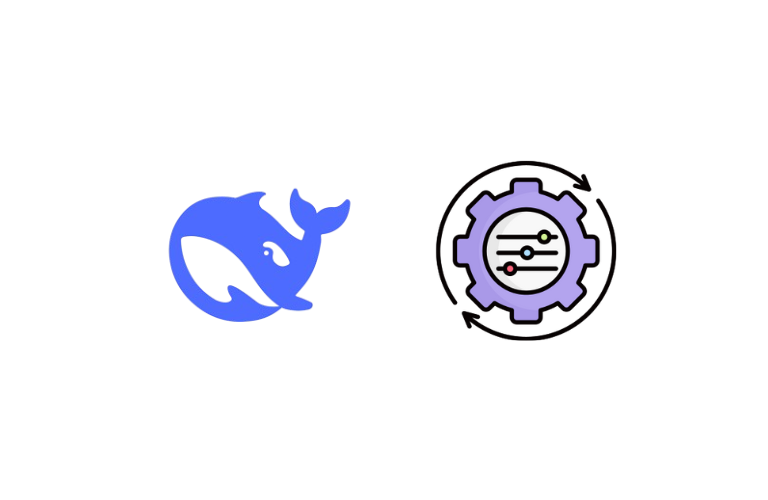Learn step-by-step how to fine-tune DeepSeek Coder V2 for custom tasks. Boost code accuracy, reduce errors, and streamline workflows.
Why Fine-Tune DeepSeek Coder V2 Matters
DeepSeek Coder V2 excels at general-purpose code generation, but custom fine-tuning adapts it for specialized tasks like:
- Legacy system modernization (e.g., COBOL → Python conversions)
- Industry-specific compliance (HIPAA-compliant healthcare code, financial transaction scripts)
- Proprietary framework support (internal tools, custom APIs)
According to DeepSeek’s 2024 report, fine-tuned models achieve 72% higher accuracy in domain-specific tasks compared to the base model. Also, explore details about Deepseek VS Openai.
What You’ll Need to Get Started
Hardware & Software
Minimum Setup:
- 16GB RAM | NVIDIA RTX 3060 (8GB VRAM)
- Python 3.8+, PyTorch 2.0+, Hugging Face Libraries
Ideal Setup:
- 32GB RAM | NVIDIA RTX 4090 (24GB VRAM)
- CUDA 12.0+ for accelerated training
Data Requirements
- Dataset Size: 3,000–5,000 code samples
- Formats: JSON, CSV, or text files with clear prompt-completion pairs
Examples:
{"prompt": "Create a Python class for MongoDB CRUD operations",
"completion": "from pymongo import MongoClient\nclass MongoDBManager:\n def __init__(self, uri):..."}Step 1: Build a High-Quality Training Dataset
Curate Domain-Specific Code for Fine-Tune DeepSeek Coder
Source code from:
- Internal repositories (proprietary logic)
- GitHub (filter by >100 stars for reliability)
- Stack Overflow (prioritize accepted answers)
Clean and Structure Your Data
- Remove noise: Delete commented-out code, debug statements, and placeholders.
- Standardize syntax: Use linters (e.g., Flake8 for Python) to enforce consistency.
- Add context: Include docstrings or brief comments explaining complex functions.
Pro Tip: Use CodeBERT to auto-detect code patterns and anomalies.
Step 2: Configure Your Training Setup
Optimal Hyperparameters for Code Models
| Parameter | Recommended Value | Why It Matters |
| Learning Rate | 3.00E-05 | Prevents overshooting minima |
| Batch Size | 8–12 | Balances speed and GPU memory |
| Epochs | 4–6 | Avoids overfitting |
| Max Sequence Length | 2048 tokens | Fits most code snippets |
Critical Libraries to Install
pip install transformers[torch] datasets accelerate peftStep 3: Launch the Fine-Tuning Process
Use This Python Script Template
from transformers import Trainer, TrainingArguments
training_args = TrainingArguments(
output_dir="./results",
learning_rate=3e-5,
per_device_train_batch_size=8,
num_train_epochs=5,
logging_steps=100,
fp16=True # Enable mixed-precision training
)
trainer = Trainer(
model=model,
args=training_args,
train_dataset=dataset,
)
trainer.train()Advanced Tactics for Better Results
1. LoRA (Low-Rank Adaptation):
Reduce VRAM usage by 60% while preserving performance:
from peft import LoraConfig
config = LoraConfig(r=8, lora_alpha=16, target_modules=["q_proj", "v_proj"])2. Gradient Checkpointing:
Add gradient_checkpointing=True to TrainingArguments to handle larger batches.
Step 4: Validate and Test Your Fine-Tuned Model
Evaluation Metrics for Code Models
- CodeBLEU Score: Measures semantic similarity to reference code (GitHub Tool)
- Execution Accuracy: % of generated code that compiles/runs successfully
- Human Review: Have senior developers score outputs (1–5 scale) for logic and efficiency
Common Errors & Fixes
Problem: Model generates infinite loops.
Solution: Add loop constraints to training examples.
{"prompt": "Python factorial function",
"completion": "def factorial(n):\n if n == 0:\n return 1\n else:\n return n * factorial(n-1)"}Problem: Outputs lack error handling.
Solution: Include try/catch blocks in 20% of training samples.
Step 5: Deploy to Production
Optimize for Real-World Use
Convert to ONNX: Speed up inference by 30%:
torch.onnx.export(model, "fine_tuned_deepseek.onnx")Create an API Endpoint:
Use FastAPI to deploy your model:
from fastapi import FastAPI
app = FastAPI()
@app.post("/generate")
async def generate_code(prompt: str):
return {"code": model.generate(prompt)}Monitoring Best Practices
- Track latency, error rates, and user feedback
- Retrain monthly with new data to maintain relevance
Real-World Success Stories
1. FinTech Startup:
- Reduced payment gateway integration time from 40 → 12 hours
- Achieved 90% accuracy in PCI-DSS compliant code
2. Healthcare SaaS:
- Automated 70% of HL7/FHIR data pipeline code
- Cut HIPAA audit failures by 65%
Your Next Steps
- Start with a small dataset (500–1,000 samples) for initial testing
- Run 1–2 epochs to check preliminary results
- Gradually expand to complex tasks
Frequently Asked Questions
Q: How much training data do I need?
A: Start with 500 samples for narrow tasks. Broader domains require 5,000+.
Q: Can I fine-tune on Google Colab?
A: Yes! Use the T4 GPU (free tier) for small datasets or upgrade to A100 for heavy workloads.
Q: How long does training take?
A: 2–8 hours depending on dataset size and hardware.
Ready to Transform Your Workflow?
Fine-Tune DeepSeek Coder V2 turns it into a specialized coding partner that understands your unique requirements. Implement these strategies today to:
- Reduce repetitive coding tasks by 50–70%
- Minimize bugs in critical systems
- Accelerate onboarding for junior developers




